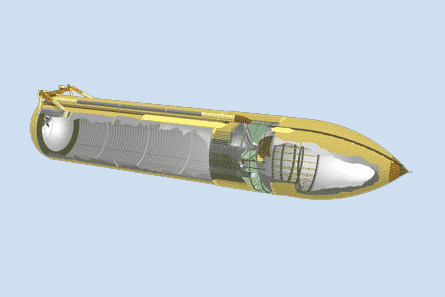By Rob Coppinger in Paris
Even as it prepares Space Shuttle Discovery for its scheduled launch tomorrow, NASA plans continued external tank (ET) testing.
In late September the agency will windtunnel test another ET ice frost ramp redesign. The ramps cover pressurisation lines and cabling along much of the length of the tank. The redesign will see less foam on top of the ramps and along their leading edges and will undergo cryogenic testing in an environmental chamber to emulate different seasons.
The ET's 34 ramps, and aft tank aerodynamic fairings, have been determined to be potential sources of foam debris of 0.XXkg (0.2lb) mass, which is of concern. But NASA thinks they do not present a threat to an orbiter's wing, only other tile areas.

Meanwhile STS-121/Discovery's tank, ET-119, had its protruberance air load ramp, which covers a cable tray, removed because it was an area of foam loss seen during the ascent of the first return-to-flight mission, STS-114. Shuttle Atlantis, for its scheduled STS-115 mission in August, will use the ET-118 tank that has the same modification.
The STS-121 tank has been instrumented for in-flight analysis. "Development flight instrumentation in the cable trays has 12 accelerometers whose data will be recorded on devices in the solid rocket booster skirts and downloaded after the boosters are retrieved from the Atlantic Ocean," says NASA, which spent much of the year after the 2005 STS-114 mission wind-tunnel testing the design change.
NASA will soon begin the downselect for a final solution to the foam loss problem from these and other ET redesigns. One of the preferred options for a long-term ramp solution is to use titanium piping brackets to secure lines and cables, because the material has low thermal conductivity. The first tank to use the brackets is expected to be ET-128, assigned to fly on mission STS-124 scheduled for early 2008.
Source: Flight International
















